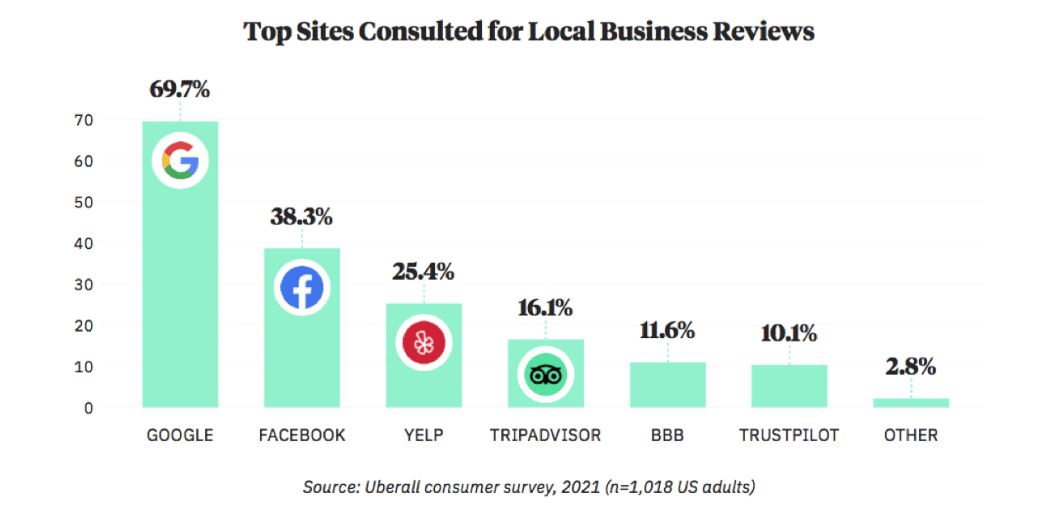If you’re bringing an app to market, you know how important positive reviews are as social proof. In any sector, online reviews are increasingly important, with nearly 70 percent of consumers turning to Google to do research on reviews before making a purchase.
Whether you’re providing a social media app or API automation testing tools, reviews are crucial to your marketing funnel. As a result, reviews are the most important part of that funnel you don’t own, hosted on places like the App Store and Google Play.
If potential customers aren’t totally convinced by the time they get to the app store, your app store reviews might be your last chance to convince them you’re worth a try. Otherwise, they’ll just move on. But you can only get so many downloads before negative reviews become inevitable. So how should you deal with negative reviews?
In this article, we’ll cover 7 tips for how to deal with negative reviews, what to do if all else fails, and how to incorporate feedback into your app to earn more positive reviews.
What are bad reviews on the app stores? Why is it important to deal with them?
The mobile app is a pillar of ecommerce and online business—what is ecommerce in 2022 without the app store? Mobile apps are great for businesses because they give you greater access to your customers. No matter how great your site is, you can’t use a website to send push notifications to reach users at any given moment and at any time.
Mobile apps can also provide better analytics on the different demographics using your app, which means you can improve your offering much faster as you iterate your way to product-market fit. But with so many decisions to make, and so many moving parts in the software, it’s inevitable that things will go wrong. With enough users, at least one of them is going to have a bad experience.
Reviews are even more important for B2B software. If you’re a B2B customer looking for a business-critical solution like NZ domain name registry, you’re depending on reviews to choose between providers. One complaint about a detail like domain privacy could make or break a deal.
Good app store ratings and reviews are essential if you want your app to succeed. While positive written reviews are nice, star ratings will go further to improve your app’s algorithmic ranking on the app store. Better reviews and ratings can expose your app to new users, and those same reviews can close the deal and help them to download, so it’s obvious why negative app store reviews are such bad news.
Your app’s star rating is displayed front-and-center on your app store page, and often in the preview windows of social shares. This makes it an essential marketing tool. And if you manage to get someone to download in spite of poor ratings and reviews, you might lose them at a conversion milestone like providing personal info because they don’t trust you.
By proactively dealing with negative app store reviews, you can:
- Address people’s concerns and build a rapport with your audience.
- Show current and potential users that you value their input.
- Increase trust in your app by showing you’re willing to listen and improve when things aren’t working.
- Work with negative reviewers to solve their problems, and convince them to amend their reviews.
If you don’t handle negative reviews and instead just try to ignore them, it’ll look like you’re neglecting your product and users. Dealing with negative reviews is hard, but the cost of not dealing with them is high.
But good-faith negative reviews could be helpful. If you have a complicated product like a digital magazine maker, there are lots of potential pain points your users could have. Focusing on the places users get stuck on will help you onboard new users and keep growing your customer base in the long term.
Negative reviews could be anything from useful, detailed feedback to just “doesn’t work”. While bad ratings – one or two-star reviews – are always bad, negative reviews could be turned into catalysts for positive change.
Either way, these reviews can’t be ignored. So how to deal with negative app store reviews?
1. Acknowledge bad reviews
The first step to dealing with a negative review is to empathize and acknowledge there’s a problem. If you can see that the user is correct about the feature they’re complaining about, honesty is the best policy. You should acknowledge the shortcoming and commit to improving.
The “service recovery paradox” is an interesting phenomenon. Customers tend to feel better about a company if they recover well from a failure than if they’d been totally successful.
You can take advantage of this if you address the cause of the negative review and make sure the customer sees you fix the issue. If you keep in touch with that customer while you fix the problem, you might even convince them to amend their review or rating. This is just one way to generate good reviews.
But that starts with empathizing with the customer and letting them know you hear their complaints. This is the quickest way to de-escalate the situation and get them to work with you.
2. Don’t take bad reviews personally
Negative app store reviews can sting. You’ve worked hard on your app, and it hurts to see users complaining about it after just a few hours of use. But it’s important to never take negative reviews personally, regardless of how rude or disrespectful the reviewer is being.
As a rule, you should respond to negative reviews in a calm and cool-headed manner. Wait a few minutes before responding, if the review feels particularly unfair or annoying.
Your job is to de-escalate the situation and get that user back on your side. Remember that this is all happening in public, and potential customers will be paying just as much attention to your responses as the reviews.
Bugs might not even be your fault. If, like many apps, your product uses a graph convolutional neural network to sort content, the error might be with the AI rather than something your team did wrong.
Bug reports make your app better, and it’s why bigger companies might even put out paid bounties for hackers to catch them. Negative reviews complaining about bugs should be seen as a benefit, enabling your team to reproduce and fix the error not just for that user, but for everyone else.
3. Take negative feedback to DMs
To handle negative app store reviews in detail, you might want to take it to another channel. That might mean inviting the user to message you privately, or to reach out to your dedicated support email.
Not only does this allow you deal with reviews out of the public eye, it also means you can build a relationship with dissatisfied customers and work with them to repair the issue. This might convince them to amend or take the negative review down.
4. Automate your response to online reviews
Your approach to dealing with negative reviews needs to be consistent. When scaling up, this can mean formulating or even automating some of your responses.
You can create different processes or templates for different kinds of reviews. This will enable you to reply faster and in a consistent brand voice, and can be the first step in a formalized process for dealing with negative reviews. The sooner you’re able to respond to reviews, the better.
You can also formulate responses to positive reviews. Here, there’s less risk of a costly misunderstanding, so you’re able to build up the process while having pleasant engagements with positive reviews. You can do this while building up a process that covers app store reviews, as well as comments on social media channels.
5. Don’t get defensive about negative feedback
The last thing you want when dealing with negative reviews is to appear defensive. This is the opposite of everything we’ve covered so far: if you’re defensive, you’re not empathizing. If you’re defensive, you’re not building a rapport with the reviewer.
If potential customers see you defending your app against perfectly fair criticism, it’ll seem like you’re ignorant of your own shortcomings. It will look like you’re unwilling to do the self-criticism required to improve and iterate on aspects like UX (user experience) design.
If a negative review mentions a bug in your software, you should thank the reviewer for pointing it out, then let them know you’ve passed the review on to the developers.
If you manage to fix that bug promptly, push out an update and shout about it in the patch notes. With the recovery paradox, mistakes are just fine as long as you’re seen to be fixing them. You could even reply to the customer review directly telling them you’ve fixed the bug.
Ultimately, the worlds of social media and app store reviews are filled with anonymous trolls. If they catch you being hostile and defensive about negative reviews, you might find them trying to get a rise out of you and waste company time dealing with asinine complaints. So make sure not to ‘feed the trolls’, by remaining calm and polite when answering negative comments.
6. Take constructive criticism
If you know what makes good UI design and how to implement it, you know the importance of user feedback. One of the most important tips to deal with negative app store reviews is to use them as an opportunity to improve. Even negative reviews are a kind of high-interest engagement. When you take your app to market, the worst possible response would be indifference.
If the user complains of a shortcoming in the app, perhaps you can take this as a feature request. If your app is new, it could mean you don’t have the product-market fit you’re looking for yet.
If your problem is that users don’t know how to achieve certain goals with your product, add a guide to that topic to your site’s FAQs or your app’s knowledge base.
Adding the results of these trials and errors to a public-facing knowledge base will benefit everyone in the long term. Wherever you fall on the Stack Exchange vs. Stack Overflow debate, solving problems in a public forum makes it easier for people having difficulties in the future to find a working solution.
7. Deal with unfair reviews
It’s not uncommon for negative reviews to be confusing, unreasonable, or just bizarre. Maybe they’re chewing you out for something completely out of your control, or complaining about your ‘women who changed the world’ content blogs.
In some cases, you might have some room to complain about the complaints. In Google Play, it’s easy to report reviews for flagging or deletion by Google. Google wants reviews—positive and negative—that are detailed and helpful for other users. If a review is less than ten characters long, it can be quickly flagged for review by Google.
Google usually won’t delete reviews just because they’re negative, so you’ll have to convince them the reviews are unhelpful to other users. If you’re in the process of live chat outsourcing, Google Play’s support is the place to go, but with the support team running such a big service you might have to be persistent to get your way. If at first you don’t succeed, try and try again.
You can increase your chances of getting an unfair review deleted by making things easy for the support staff—make sure to have your message and any other information ready in a note.
If you can’t get Google’s support team to remove a review, you might have to enlist some users. Get them to flag and report the reviews from a user perspective, complaining the review is inaccurate, offensive, or contains strong language.
Turning negative reviews into positives
If you follow these tips, the daunting task of dealing with negative app store reviews should be a little easier. At the very least, you now have a go-to process for dealing with harsh criticism and learning what you can from it. At best, you’ll be able to turn situations around and turn reviews from unhappy customers into positive stories about a company that listens closely to its users.












